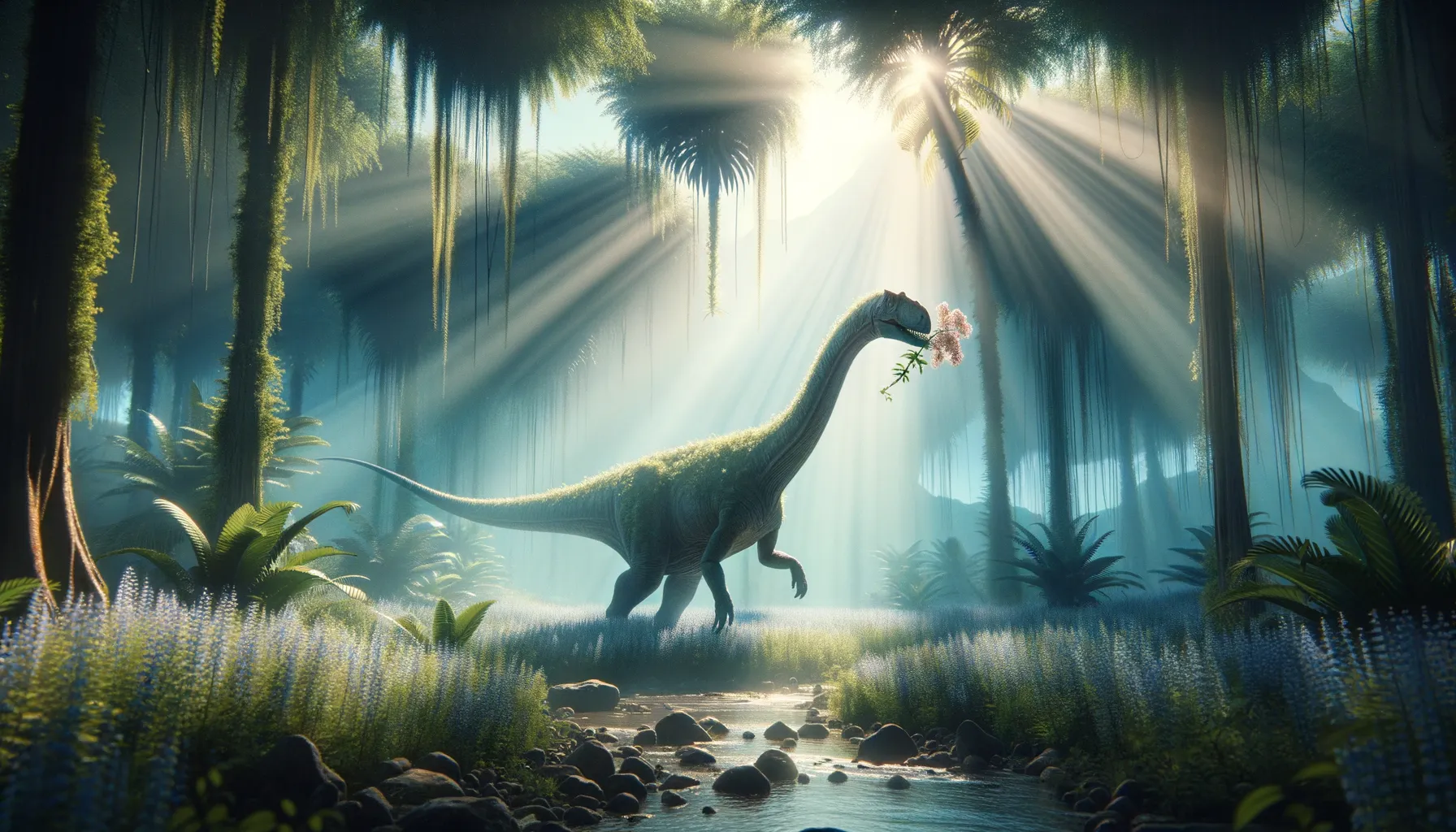
Unaysaurus
Explore ancient roots of gigantic successors.
Period
Triassic
Length
Roughly 2.5 meters long.
Height
About 1.5 meters tall at the hips.
Weight
Weighed approximately 70 kilograms.
Unaysaurus was a pioneering herbivore from the Late Triassic period, living around 230 million years ago. Discovered in South America, it provides critical insights into early dinosaur evolution. With a modest build and a plant-based diet, this genus exemplifies early adaptations to terrestrial herbivory. Its fossils help bridge gaps in our understanding of sauropodomorph evolution, highlighting its role as a precursor to the giant dinosaurs that followed.
Diet
Unaysaurus was primarily herbivorous, feeding on a variety of plants available during the Triassic period. It likely relied on tough vegetation, such as ferns and cycads, using its teeth adapted for grinding plant material.
Hunting
Being a herbivore, Unaysaurus did not engage in hunting practices. Instead, it needed to constantly search for and gather plant material to sustain itself.
Environmental challenges
The habitat of Unaysaurus was subject to significant environmental changes, such as shifting climates and evolving flora. The Late Triassic period saw fluctuating weather patterns, challenging plant availability, and diverse ecosystems emerging. These changes posed challenges in securing consistent food sources and avoiding predators.
Speed
Moderate, not among the fastest dinosaurs.
Lifespan
Estimated at about 20 to 30 years.
First discovery
Uncovered in Brazil in the late 1990s.
Fun Facts
- Unaysaurus was a small dinosaur that lived around 225 million years ago in what is now Brazil.
- It was a herbivore, which means it primarily ate plants and leaves.
- Unaysaurus belonged to the group of dinosaurs known as sauropodomorphs, which were precursors to the gigantic sauropods like Brachiosaurus.
- The name 'Unaysaurus' is derived from a local indigenous word 'unay', meaning 'black water', referring to the area where it was discovered.
- Unaysaurus had a long neck and tail, which helped it reach high vegetation and maintain balance.
- Fossils of Unaysaurus were discovered in the Santa Maria Formation, a rock formation known for its rich trove of dinosaur finds.
- Despite its ancient age, Unaysaurus wasn't discovered until 1998, making it a relatively recent addition to our understanding of dinosaur history.
Growth and Development
Unaysaurus showcased a developmental pattern akin to early dinosaurs, growing relatively steadily throughout its life. This steady growth was crucial in developing robust muscles and bones necessary for supporting its lifestyle. Juveniles likely experienced rapid growth to reach a size that reduced susceptibility to predators.
Habitat
Unaysaurus lived in a semi-arid environment, rich in ferns and other primitive plants. Such environments provided both food and cover from predators. The landscape might have featured riverbeds and occasional forests, offering diverse ecological niches.
Interaction with other species
Unaysaurus coexisted with various early dinosaurs, synapsids, and crocodilian ancestors. Interaction with these species involved competition for resources and the constant threat of predation. Fossil evidence suggests some degree of niche partitioning, where different species specialized in specific food sources or habitats.
Natural lifespan
Unaysaurus had a reasonable lifespan for its size, living up to 30 years in natural conditions.
Reproduction
Unaysaurus reproduced by laying eggs, like most dinosaurs. Clutches were likely laid in safe, concealed environments to protect them from predators. Parental care strategy is poorly understood but might have involved some level of nest protection until hatching.
Social behaviour
Unaysaurus might have shown some degree of social behavior, indicated by possible group living or at least occasional herding. This behavior could offer protection against predators and increase foraging efficiency. Social interactions would primarily involve communication related to movement and reproduction.
Fossil locations
Fossils of Unaysaurus have been predominantly found in Brazil, specifically within the Santa Maria Formation. These locations have provided deep insights into the array of early dinosaurs and the ecosystems of the Late Triassic period. Their presence in South America highlights the ancient distribution of sauropodomorphs.
